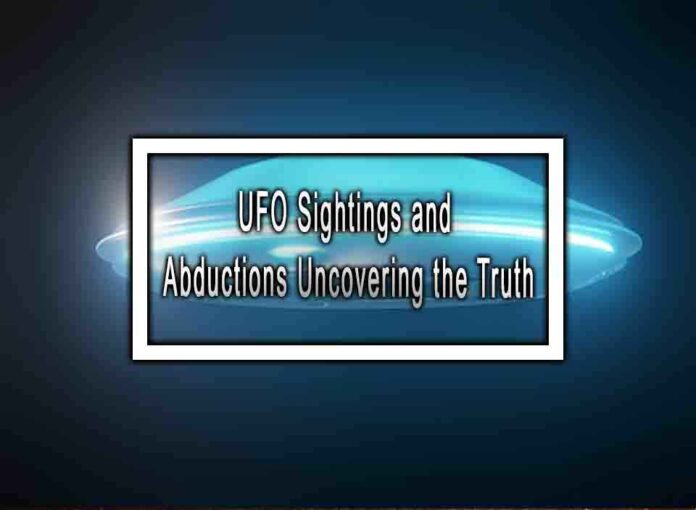“UFO Sightings and Abductions: Uncovering the Truth” delves into the more mysterious and controversial aspects of the UFO phenomenon, specifically focusing on alleged encounters between individuals and unidentified flying objects, often accompanied by claims of abduction by extraterrestrial beings. Here’s an overview of how the quest for truth unfolds in these cases:
Collection of Witness Testimonies:
Investigating UFO sightings and abductions begins with gathering detailed testimonies from individuals who claim to have experienced these encounters. These accounts may include descriptions of the UFOs, the abduction experiences, and any physical or psychological effects.
Hypnosis and Regression Therapy:
In cases of claimed abductions, some individuals undergo hypnosis or regression therapy to recover memories that may have been suppressed or forgotten. This is a controversial technique and is often met with skepticism in scientific circles.
Psychological Evaluation:
Mental health professionals may be involved to assess the mental state of those reporting UFO abductions. This is done to determine whether any psychological factors, such as sleep disorders or trauma, could explain their experiences.
Physical Examination:
Some alleged abductees claim to have physical evidence of their encounters, such as scars, marks, or implants. Medical examinations and analysis of these physical findings may be conducted to ascertain their authenticity.
Polygraph Testing:
Polygraph or lie detector tests are sometimes used to assess the credibility of witnesses. However, the reliability of polygraph results is debated, and they are not considered definitive proof.
Investigation of Physical Evidence:
Physical evidence related to UFO sightings and abductions, such as soil samples, radiation readings, and anomalies in the environment, may be collected and analyzed by experts in various fields, including geology and biology.
Research into the Phenomenon:
Investigators and researchers may study patterns and commonalities among abduction reports to identify recurring themes or elements. This can help distinguish genuine accounts from hoaxes or hallucinations.
Cross-Referencing with Known Phenomena:
Efforts are made to rule out conventional explanations for abduction experiences, such as sleep paralysis, lucid dreams, or mental health conditions. Critical thinking and scientific inquiry are essential in this process.
Support Groups and Counseling:
For individuals who claim to have experienced UFO abductions, support groups and counseling may be available to help them cope with their experiences and provide a platform for sharing their stories.
Public Awareness and Education:
Investigative efforts also involve raising public awareness about UFO sightings and abductions. This includes conferences, documentaries, books, and online resources that allow for the dissemination of information and open discussion.
It’s important to note that the vast majority of UFO sightings and abduction claims can be explained by natural phenomena, misidentifications, psychological factors, or hoaxes. Scientific scrutiny is essential in separating fact from fiction in these cases. While some encounters remain unexplained, conclusive evidence of extraterrestrial abductions remains elusive, and the search for the truth continues to be a subject of debate and exploration.










